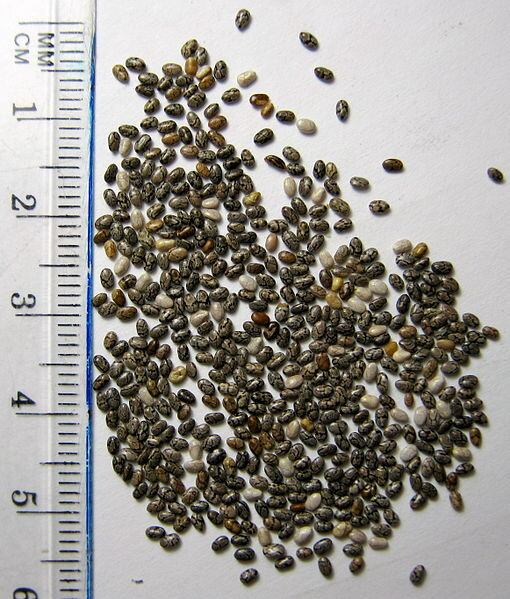Chia is a nutritional powerhouse packed with protein, fiber, the short-chain omega-3 fatty acid alpha linolenic acid (ALA) and antioxidants as well as calcium, phosphorous, magnesium, potassium, iron, and zinc.
Technically a seed rather than a grain, chia tends to be included under the 'ancient grain' moniker. It has found its way into numerous products, from yogurts and pasta to hamburgers and sports nutrition products (chia has strong support from the endurance athlete community after being cited in the barefoot runner bible Born to Run).
Demand
Melissa Kruse from The Chia Company in Australia told us that, according to Nutrition Business Journal Research and Nielsen’s Food/Drug/Mass/Natural Channels (Nielsen/Spins latest 52 weeks ending September 1, 2012), the chia category is growing at 239% and will be a $1.1 billion category by 2020.
Juan de Salas, Sales and Marketing Director for BeneXia, said that the company believes that the chia market in US should be around 7,000 tons on a yearly basis.
“According to our estimates, chia production worldwide double from 15,000 tons to 30,000 tons,” said de Salas. “The US and Australia continue being the countries that consume more chia as but there are markets such as UK, Brazil, Chile, Spain that have increased their demand significantly.
“Currently we see a lot of interest in Asia and Europe with the extension of the novel food for seed. In America we are very much impressed by the potential of Canada and Colombia – a year ago there was no interest about chia and today it is blooming.”
Nicole Rees, business development manager, for Glanbia Nutritionals, told FoodNavigator-USA that the US market is the largest in the western world but consumption in South America is higher as it is a traditional food source.
“We are seeing consistent double digit growth in demand year on year,” said Rees. “This is being driven by increased use in cereals, snacks and beverages.”
Supply

The main chia producing countries include Argentina, Bolivia, Ecuador and Peru, with Bolivia and Argentina the strongest suppliers of chia in Latin America.
“There is evidence that Paraguay has been able to plant chia successfully but it will still require some years for Paraguayan producers to acquire the knowledge and skills of Argentinian and Bolivian producers regarding productivity and quality,” said BeneXia’s de Salas. The company also recently inked a supply deal with growers in Brazil.
“Growers in South America have increased production of chia to meet the growth in demand,” noted Glanbia’s Rees. “However, this year there has been a drought in Argentina and frosts in Paraguay which are impacting on the yields in these countries. The yields from other regions appear to be good though. At the moment there is adequate supply to meet demand but there is the expectation the drought in Argentina will have an impact in the market at a later point.”
De Salas added that Benexia has had an “acceptable harvest this year”, and the company was able to more than double the production of 2012. “However, our plans were to have three times as much chia as in 2012-13,” he said. Despite falling short of their targets the company is “very satisfied”, he said, considering the challenging climatic conditions throughout Latin America.
About 80% of the world’s supply is said to come from South America, and creation of a Chia Council – a regional organization to promote good trade practices, centralize all scientific information, and to collect market data to enable a better organization and communication – was mooted last year by Chile’s BeneXia.
De Salas said that three meetings have taken place in 2012 -2013 regarding the Chia council.
“Today, the blooming market includes lots of new actors on both market and production sites makes that we will need to adapt and make a structure that includes all actors, a structure that can help to grow the market harmonically,” he said. “We will continue to work with the purpose throughout 2014.”
Australia
Outside of its traditional Latin American growing area, The Chia Company in Australia is expanding capacity every year in line with market demand, said the company’s Melissa Kruse.

“We are the only Australian grown Chia,” said Kruse. “The farms where the seed is grown are located in the Kimberley region of Western Australia, exactly 15 degrees from the equator. This latitude provides the ideal amount of sunlight to grow Chia rich in Omega 3. By growing our own seed we are able to guarantee consistent high quality for everything bearing The Chia Co name.
“The Chia Co manages all aspects of quality; from agronomy to packing and distribution and can trace every bag of Chia back to the exact paddock it was grown.”
Quality is a key differentiator for suppliers, and Glanbia’s Rees says that the quality can vary every year, “and this year there appears to be a higher volume of inferior seed in the market, identified by higher levels of grey and brown seed, smaller seeds and lower purity levels.
“We source exclusively from specific regions in South America as we have found the chia grown in those regions to be excellent quality.”
Foods
A driving force for demand, beyond the health benefits associated with the seed, is its ease of use in a wide variety of products. “Chia can be incorporated into any food product, we supply category leading products in smoothies, yogurt and bread,” said The Chia Co.’s Kruse.
Glanbia’s Rees said the company offers different forms, depending on the end product. “We offer a finely milled, validated heat treated version of chia called BevChia which is very smooth in texture and has the added value of being a heat treated product with a validated 5-log reduction.
“We also sell a coarser ground product, SelectChia, which is heat treated and is ideal for cereals and cold-form granola bars. And finally, we sell whole chia that is also produced using a validated 5 log reduction heat process and is excellent for snacks, bars and cereals.”
Omega-3

Much of the attention towards chia has focused on the omega-3 content – for example, The Chia Company guarantees 20% omega-3 content in all of its chia.
A recent study by scientists from the Appalachian State University and the University of North Carolina found that 25 grams per day of milled chia seed for seven weeks were associated with 138% increases in levels of alpha-linolenic acid (ALA) and 30% increases in eicosapentaenoic acid (EPA) levels (Plant Foods for Human Nutrition, Vol. 67, pp. 105-110).
“The health implications of increasing plasma ALA through milled chia seeds or other plant sources are still being debated, but two randomized studies (10–12 weeks) by our research team have failed to show changes in disease risk factors including blood lipids, blood pressure, inflammation, oxidative stress, and arterial stiffness,” wrote the Carolina-based scientists.
